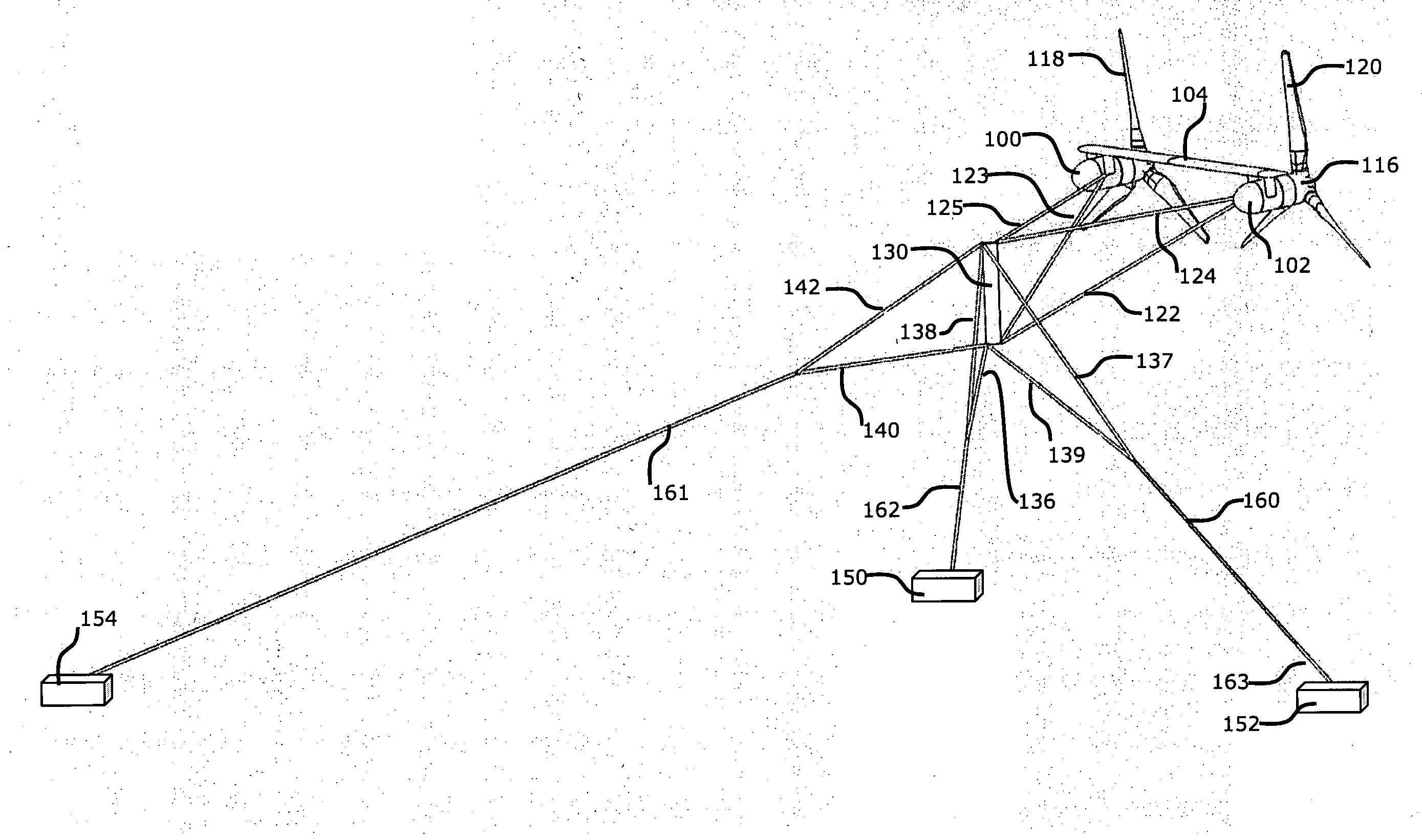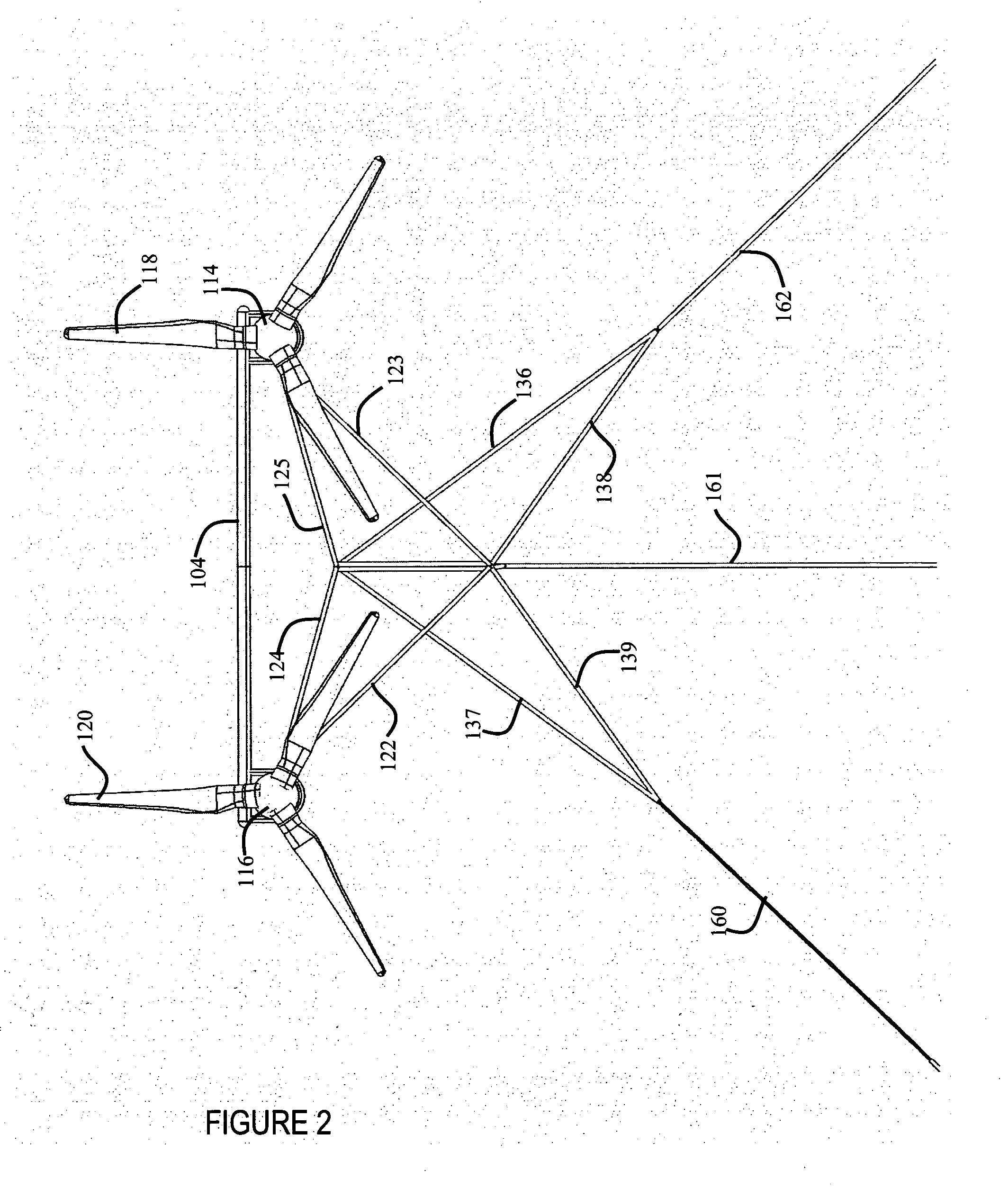Multi-point tethering and stability system and control method for underwater current turbine
a multi-point, stability technology, applied in the direction of electric generator control, special-purpose vessels, vessel construction, etc., can solve the problems of engineering challenges of deploying towers in deeper waters, underwater construction costs, etc., and achieve simple control, provide stability, and provide stability
- Summary
- Abstract
- Description
- Claims
- Application Information
AI Technical Summary
Benefits of technology
Problems solved by technology
Method used
Image
Examples
Embodiment Construction
[0051]The invention relates to a multi-point tethering and stability system for underwater current turbines providing for yaw and depth adjustment capability in the current flow to optimize power extraction while maintaining operating stability in all degrees of freedom without requiring active lift or buoyancy adjustment and controls.
[0052]A method is described of tethering an underwater, water current-driven turbine, power-generating device to achieve stability in all degrees of freedom without the need to use buoyancy variation or lift adjusting mechanisms for depth adjustment that allows for yaw and depth adjustment in the current flow to optimize power extraction. The turbine includes variable-pitch rotor blades. A maximum allowable drag force load on the turbine rotors is selected. The pitch of the variable-pitch rotor blades on the turbine is adjusted such that the drag force loading of the device does not exceed a maximum design level.
[0053]The extraction of power in the for...
PUM
 Login to View More
Login to View More Abstract
Description
Claims
Application Information
 Login to View More
Login to View More - R&D
- Intellectual Property
- Life Sciences
- Materials
- Tech Scout
- Unparalleled Data Quality
- Higher Quality Content
- 60% Fewer Hallucinations
Browse by: Latest US Patents, China's latest patents, Technical Efficacy Thesaurus, Application Domain, Technology Topic, Popular Technical Reports.
© 2025 PatSnap. All rights reserved.Legal|Privacy policy|Modern Slavery Act Transparency Statement|Sitemap|About US| Contact US: help@patsnap.com



